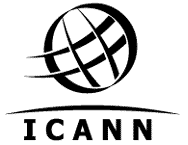For several years, there have been proposals to introduce new generic top-level domains (gTLDs) into the Internet Domain Name System (DNS). Although the introduction of gTLDs raises several issues that are of concern to various members of the Internet community, significant progress has been made recently toward achieving a consensus solution. The ICANN Board of Directors is expected to consider adopting a policy to introduce new gTLDs at its meeting on 15-16 July 2000 in Yokohama, Japan. Present Structure of the Domain-Name System. The DNS employs top-level domains consisting of two general types. Two-letter codes (such as .de, .jp, and .uk) are used to represent the names of countries and territories and are referred to as country-code top-level domains, or simply "ccTLDs." Longer codes are referred to as gTLDs. Presently these longer codes are .com, .net, .org, .edu, .int, .mil, and .gov. (One other top-level domain, .arpa, is used for for Internet-infrastructure purposes.) History of Discussions. For several years, there have been proposals to implement additional gTLDs in the DNS. These proposals have ranged from adding a few gTLDs to several hundred. Different types of gTLDs have been discussed, ranging from gTLDs available for registrations by any person or organization for any use ("unrestricted gTLDs") to gTLDs intended for registrations by particular types of persons or organizations or for particular uses ("chartered gTLDs"). Because no new gTLD has been added for many years, concerns have been raised that their introduction might disrupt the operation of the Internet or the domain-name registration system. The US Government's June 1998 White Paper, which proposed transitioning the Government's responsibilities for technical coordination of the Internet to a private-sector not-for-profit corporation (now ICANN), noted that the private-sector coordinating corporation should ultimately have the authority necessary to oversee policy for determining the circumstances under which new TLDs are added to the root system. The White Paper noted, however, that:
On 30 April 1999, the World Intellectual Property Organization, which at the request of the US Government had conducted a study of intellectual-property issues in connection with the DNS and proposals for its evolution, submitted a report to the ICANN Board of Directors. That report concluded that, on the condition that various measures were adopted to protect intellectual-property rights, new gTLDs could be introduced, provided that they were introduced in a slow and controlled manner that takes into account the efficacy of the proposed measures in reducing existing problems. Among these measures was a proposed mechanism for protecting globally famous names in any new gTLDs. At its meeting in Berlin on 27 May 1999, the ICANN Board referred the issues of gTLD expansion and globally famous trademarks to the newly formed ICANN Domain Name Supporting Organization (DNSO). On 25 June 1999, the DNSO Names Council (which manages the process for development of policy recommendations within the DNSO) created a group, known as Working Group C, to study the issues raised by the introduction of new gTLDs. The Names Council also created another group, known as Working Group B, to study issues concerning the protection of famous trademarks in the context of any newly introduced gTLDs. Names Council Recommendation on New gTLDs. Working Group C submitted of its report to the DNSO Names Council on 21 March 2000 and posted the report for public comment. Public comments were solicited and received through the icann.org web-based comment forum and e-mail to the dnso.org site. Working Group C provided a supplemental report on 17 April 2000. The Names Council discussed these reports and comments at a telephone conference held on 18 and 19 April 2000. At that meeting, the Names Council adopted the following statement of its recommendations, by a vote of 16-0 (two members were absent):
Additional Names Council Recommendations. As just noted, the Names Council expects that during the week of 15 May 2000 it will provide supplemental recommendations to the ICANN Board. One possible topic of supplemental recommendations concerns the formal report of Working Group B, concerning procedures for addressing trademark issues that may arise during the initial phase of registrations in a new gTLD. The Names Council invites the Internet community to comment on this report until 10 May 2000, so that it may consider the comments in formulating any supplemental recommendations that it may adopt. You can read Working Group B's formal report and make comments by following the links below:
Public Comments to the Board. On 10 March 2000, the Board instructed the ICANN staff to prepare draft policies, draft implementation documents, commentary, and statements of issues on the introduction of new gTLDs, taking into account protection of globally famous trademarks. Over the next several weeks, these materials will be posted for public comment on the ICANN web site. The Board will consider adopting a policy or policies on these issues at its meeting in Yokohama on 15-16 July 2000. Comments concerning the layout, construction and functionality of this site should be sent to webmaster@icann.org.
(c) 2000 The Internet Corporation for Assigned Names and Numbers. All rights reserved. |
